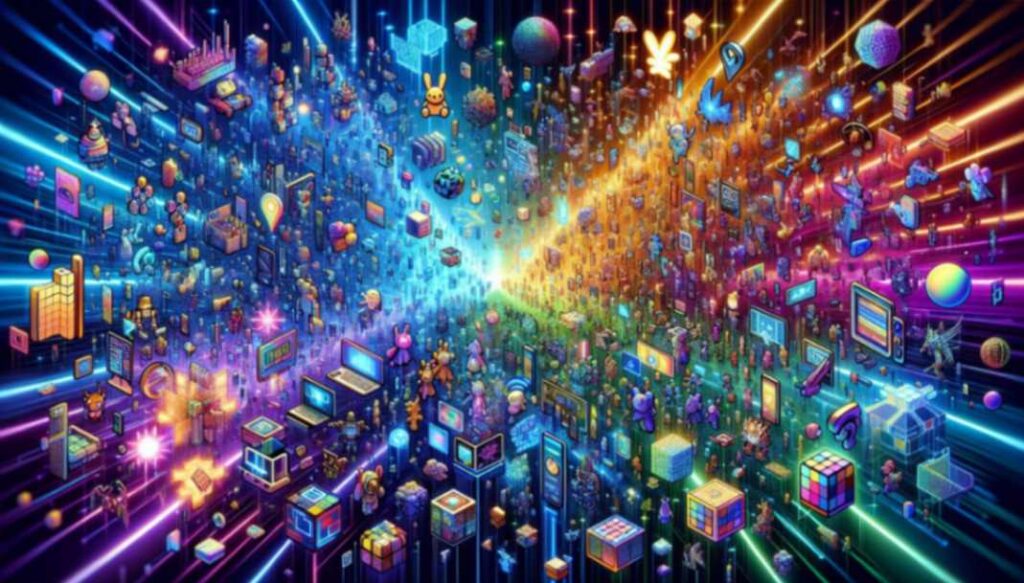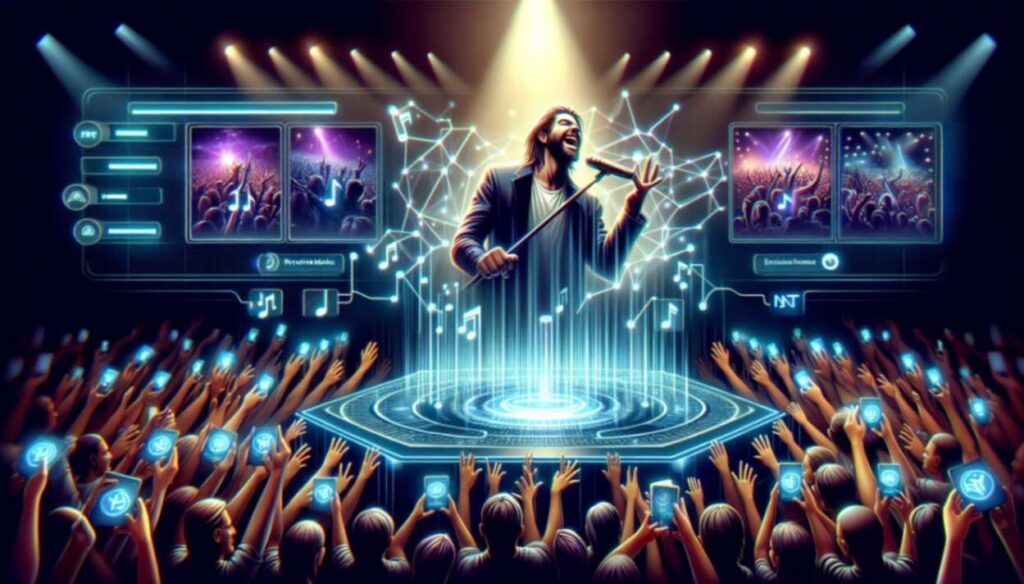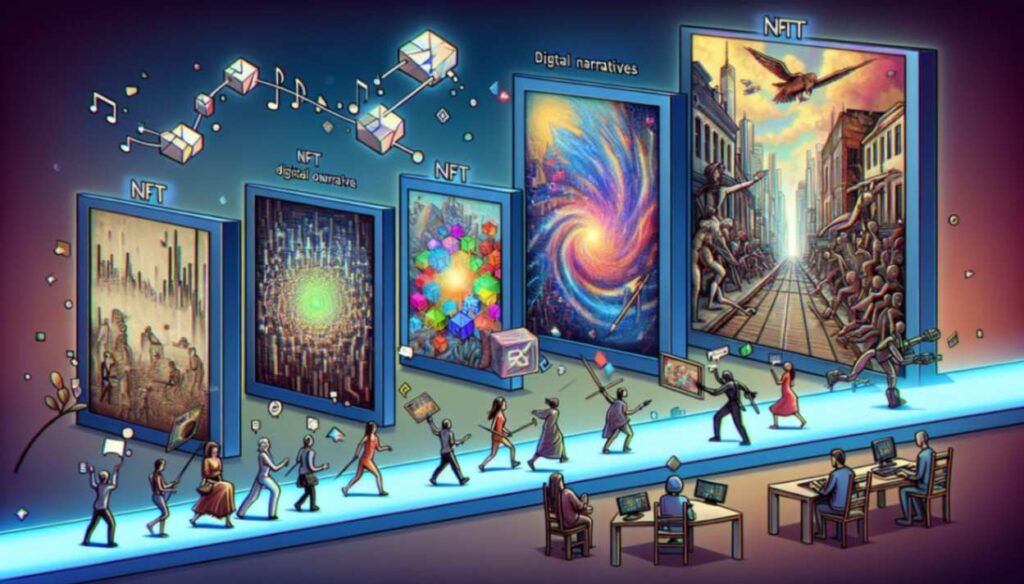In the face of fluctuating markets and skepticism, one question looms large: Are NFTs dead? This article cuts through the speculation to examine the current state and emerging trends within the NFT ecosystem, revealing a landscape where innovation persists amid challenges.
Key Takeaways
The NFT market is facing a downturn and saturation, but continues to show signs of activity and innovation, including branching into areas like tokenization of assets and NFT-based loans.
While the initial hype around NFTs is diminishing, they are increasingly being adopted for pragmatic uses in various industries, such as art, gaming, and collectibles, moving towards more stable growth.
NFTs are evolving with new use cases and technologies, despite facing environmental and economic scrutiny, highlighting the blend of risks and potential rewards for investors and creators in the digital collectible space.
READ MORE: Top 5 Most Expensive NFT Deals: A Glimpse into Digital Asset Fortunes
NFT Pulse Check: Assessing the Vital Signs of Non-Fungible Tokens

The NFT market has seen a significant downturn. Many NFTs have experienced a substantial decline in value after their initial surge. According to a report by dappGambl, 95 percent of NFTs would not sell at all today, suggesting an oversupply relative to the demand. The market is saturated, but that doesn’t mean it’s inactive.
Despite the decline, the NFT ecosystem continues to thrive, with new participants entering the space, driven by celebrity endorsements and the novelty of digital ownership. However, some key factors like the collapse of Terra Luna, the failure of FTX, crypto devaluation, and changing global economic conditions have contributed to the market decline.
The Hype Cycle Reality: Beyond the Initial Excitement
The initial excitement around NFTs may be waning, but that doesn’t mean the NFT world is disappearing. According to the Gartner Hype Cycle, NFTs may be moving from the ‘Trough of Disillusionment’ to the ‘Slope of Enlightenment’ phase. In this phase, technologies often experience a more moderate and steady growth in adoption, marked by a rise in pilot projects and a focus on benefiting specific enterprise applications.
This transition in the NFT space means that the acquisition of NFTs is shifting towards more pragmatic reasons. People are now acquiring NFTs for:
display
collection
supporting artists
seeking real-world applications
This shift is a clear sign that the future of NFTs lies beyond the hype and initial excitement.
Market Dynamics: Saturation Versus Innovation
The rapid increase in the number of creators and investors in the NFT space has led to market saturation. This saturation makes it hard for individual pieces to stand out, and the vast majority of NFT collections are lost in the crowd. The abundance of NFTs, including those of questionable quality, has made it difficult for collectors to find valuable pieces, leading to a perception of dilution in the space.
While saturation poses a challenge, there’s also innovation happening. NFT-based loans and tokenization of assets like real estate are providing new revenue streams within the NFT ecosystem. This innovation is a testament to the resilience and potential of the NFT market.
A Closer Look at NFT Use Cases
NFTs serve more than just a means of digital ownership; they have practical applications across various industries, including art, gaming, and collectibles. The diverse use cases of NFTs are a testament to their versatility and potential.
Let’s take a closer look at how NFTs are being used in different areas.
Digital Art and Collectibles

In the realm of digital artworks in nft space, NFTs have made a significant impact. They introduce digital scarcity into the art world, enabling artists to:
Create limited-edition pieces that are unique and verified on the blockchain
Monetize their art in a fresh avenue
Offer collectors the opportunity to invest in unique digital assets
NFTs have revolutionized the way digital art is bought, sold, and collected in the digital world, giving rise to a thriving nft collection market and increasing nft sales.
Companies like NBA Top Shot and marketplaces such as OpenSea have pioneered the sale of digital collectibles through NFTs. These transactions often require cryptocurrencies like Ether, further integrating the NFT and crypto market.
Music and Entertainment

The music and entertainment industry is another area where NFTs are making a significant impact. NFTs in music can represent ownership of digital music files, exclusive merchandise, and live performance recordings. This usage of NFTs provides artists with new revenue models and offers fans unique experiences.
Artists can share royalties from their music with fans through NFTs, creating a new revenue model for both parties. They can also offer limited edition or unreleased songs, concert tickets, and merchandise through NFTs. These new models of engagement and revenue streams are transforming the music and entertainment industry.
READ MORE: The Ultimate Guide to Crypto Airdrops: Everything You Need to Know
Real Estate and Virtual Worlds

Real estate and virtual worlds are other areas where NFTs are making their mark. NFTs enable unique investment, trading, and ownership verification in digital real estate and asset transactions within digital worlds. This usage of NFTs is creating unique investment opportunities and enhancing user engagement.
In gaming and virtual economies, NFTs promote deeper player engagement by enabling them to own, sell, and profit from in-game assets. With the merging of augmented and virtual reality technologies with NFTs, the user experiences in creative industries could be transformed.
Environmental Considerations and NFT Longevity
While NFTs are reshaping various industries, they are not without their environmental impact. The energy consumption of blockchain networks, which underpin NFTs, has resulted in increased scrutiny and may affect demand. NFTs contribute to greenhouse gas emissions and climate change due to the energy usage of the technology they rely on.
There’s also the issue of electronic waste from blockchain hardware that becomes outdated or worn out from continuous use. However, initiatives are underway to mitigate these concerns. Renewable energy sources and efforts to recycle electronic waste from blockchain operations could decrease the environmental impact of blockchain mining and hardware recycling.
Investment Perspective: Weighing the Risks and Rewards
Investing in NFTs involves risks but also presents potential. Speculative behavior in the NFT market has led to price volatility, with a focus on quick returns rather than long-term support for creators. The value of digital collectibles is subject to high volatility and is reliant on market demand.
Broader economic pressures, such as rising inflation and living costs, have prompted a more cautious approach to investment in speculative assets like NFTs. Despite these risks, NFTs continue to present potential revenue streams, underlining the need for a cautious but open-minded approach to investing in the NFT market, considering the real demand.
The Evolution of Technology and Community in the NFT Space
The NFT space continues to evolve, driven by technological advancements and community growth. Blockchain technology, particularly the Ethereum blockchain, has lowered energy consumption by transitioning to a Proof-of-Stake mechanism. There is an active initiative within blockchain communities to establish more eco-friendly NFT protocols, addressing environmental concerns.
New monetization strategies are also emerging, including tokenizing personal data, which can be sold as NFTs. Alongside these developments, the NFT space has witnessed a surge in community growth, driven by increasing interest from artists and creators who engage directly with their audience, streamlining distribution and income.
NFT Narratives: Separating Fact from Fiction

Despite the challenges in the NFT market, it’s crucial to separate fact from fiction. Ordinals and other Bitcoin NFT collections have seen a surge in trading volume and market share, showcasing ongoing vibrancy in the space. The recent rise in innovation and development within the Bitcoin network has had a positive influence, particularly evident in the burgeoning Bitcoin NFT sector.
A cultural shift is underway that embraces the concept of digital ownership, laying the groundwork for continued interest in and adoption of NFTs. Despite market challenges, the ongoing innovation and cultural shift suggest that NFTs are not dead but continue to evolve and find new applications.
Summary
In summary, the NFT market has seen a substantial shift from the initial hype towards more sustainable and meaningful applications. Despite challenges such as market saturation and environmental concerns, the ongoing innovation and community growth within the NFT space suggest a promising future. The narrative that NFTs are dead is far from the truth. Instead, they continue to evolve, reshaping various industries, and forging a new path in the digital world.
Frequently Asked Questions
Are NFTs dead?
No, NFTs are not dead. The market for NFTs continues to evolve and find new applications despite a decline in value and demand.
What is the current state of the NFT market?
The NFT market has experienced a decline in value and demand due to factors such as market saturation, environmental concerns, and broader economic pressures.
What are some practical applications of NFTs?
NFTs have practical applications in digital art, music, entertainment, and real estate. They are used across various industries to represent ownership of digital assets.
What is the environmental impact of NFTs?
NFTs have a significant environmental impact, contributing to greenhouse gas emissions, climate change, and electronic waste due to the energy consumption of the blockchain technology they rely on. This is a concerning issue that requires attention and consideration.
What are the risks and rewards of investing in NFTs?
Investing in NFTs carries risks due to market volatility and economic pressures, but also offers potential revenue streams and unique investment opportunities. Consider carefully before investing.
Table of Contents
Disclaimer: This article is for informational purposes only and should not be considered financial or investment advice. Cryptocurrency investments are subject to market risks, and readers should do their own research and consult with professionals before making any investment decisions. Hash Herald is not responsible for any losses in the market.












